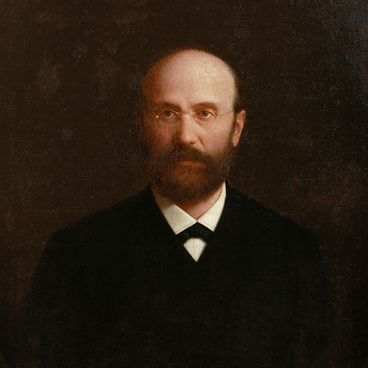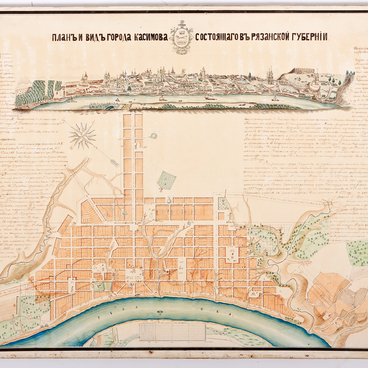The collection of the museum-reserve houses a Kasimov woolen skirt (poneva) of the late 19th century. It was made in the technique of double weaving: the outer thread of dense woolen fabric formed the top layer of fabric in a large purple-red and dark blue check, and white hemp thread formed the geometric pattern and the under side.
The woolen skirt was an obligatory element of women’s peasant costume in the southern regions of Russia. It was made from homespun wool of red, black or blue color, additionally decorated with geometric or floral ornaments.
Originally, this detail of the costume was worn by girls in the period of matchmaking, when they were just getting ready to become brides. But in the late 19th century — early 20th century, girls began to wear sundresses more often before wedding, and woolen skirts were worn after the wedding. In different villages, woolen skirts differed in details. Researchers believe that the color of the product, the size of the checks, the way of wearing and decorations on the skirt could determine where the woman was from.
There were several types of woolen skirts. The flared woolen skirt resembled an apron and consisted of three woolen or half-woolen horizontal cloths, which were partially sewn together. The top edge of the clothing was fastened at the waist with a belt, a cord, which was called “gashnik”.
In most districts of the Ryazan Governorate, there was another kind of a woolen skirt — “closed skirt”. It resembled a skirt and had a fourth, additional cloth — “proshva” — of a lighter non-wool fabric.
Skirts varied in color, fabrication technique and ornamentation. For example, in the Meshchersk district in the north of the Ryazan Governorate, women preferred festive woolen skirts with a special ornament made of heavy pickup fabric — that was the name given to the patterned material, which was woven with threads of different colors. The everyday woolen skirt, common in Kasimov district, was dark blue with white or colored checks.
One of the most popular ways to wear the woolen skirt was the “tucked-in” method. The corners of the clothes on the outside on both sides were folded up and tucked behind the belt, so that the back turned into a “kulyok” — an asymmetrical triangular bag. So the skirt was not in the way while working. The top of the woolen skirt was also tucked up on holidays to show the richly embroidered hem of the shirt.
The woolen skirt was an obligatory element of women’s peasant costume in the southern regions of Russia. It was made from homespun wool of red, black or blue color, additionally decorated with geometric or floral ornaments.
Originally, this detail of the costume was worn by girls in the period of matchmaking, when they were just getting ready to become brides. But in the late 19th century — early 20th century, girls began to wear sundresses more often before wedding, and woolen skirts were worn after the wedding. In different villages, woolen skirts differed in details. Researchers believe that the color of the product, the size of the checks, the way of wearing and decorations on the skirt could determine where the woman was from.
There were several types of woolen skirts. The flared woolen skirt resembled an apron and consisted of three woolen or half-woolen horizontal cloths, which were partially sewn together. The top edge of the clothing was fastened at the waist with a belt, a cord, which was called “gashnik”.
In most districts of the Ryazan Governorate, there was another kind of a woolen skirt — “closed skirt”. It resembled a skirt and had a fourth, additional cloth — “proshva” — of a lighter non-wool fabric.
Skirts varied in color, fabrication technique and ornamentation. For example, in the Meshchersk district in the north of the Ryazan Governorate, women preferred festive woolen skirts with a special ornament made of heavy pickup fabric — that was the name given to the patterned material, which was woven with threads of different colors. The everyday woolen skirt, common in Kasimov district, was dark blue with white or colored checks.
One of the most popular ways to wear the woolen skirt was the “tucked-in” method. The corners of the clothes on the outside on both sides were folded up and tucked behind the belt, so that the back turned into a “kulyok” — an asymmetrical triangular bag. So the skirt was not in the way while working. The top of the woolen skirt was also tucked up on holidays to show the richly embroidered hem of the shirt.

